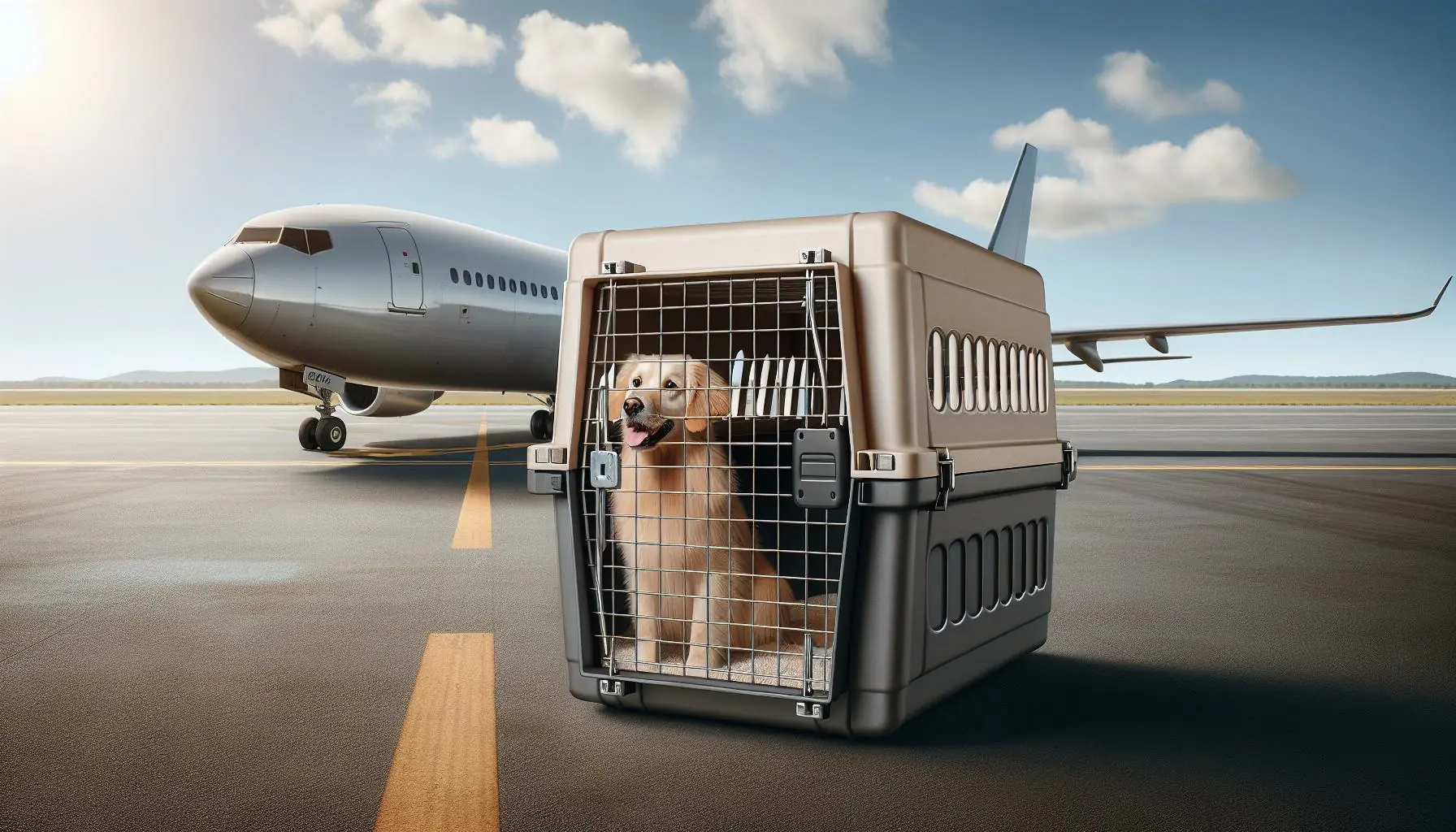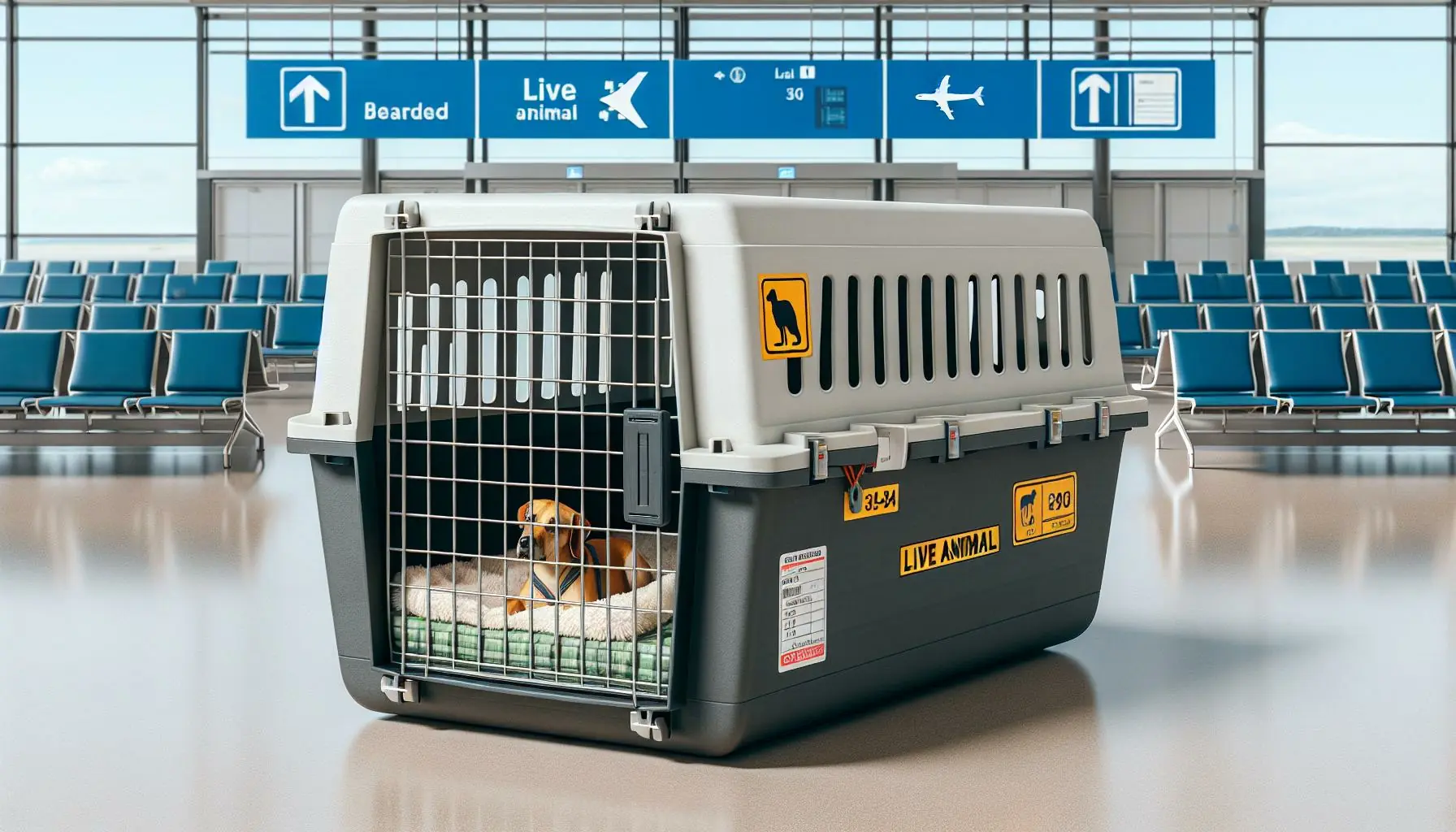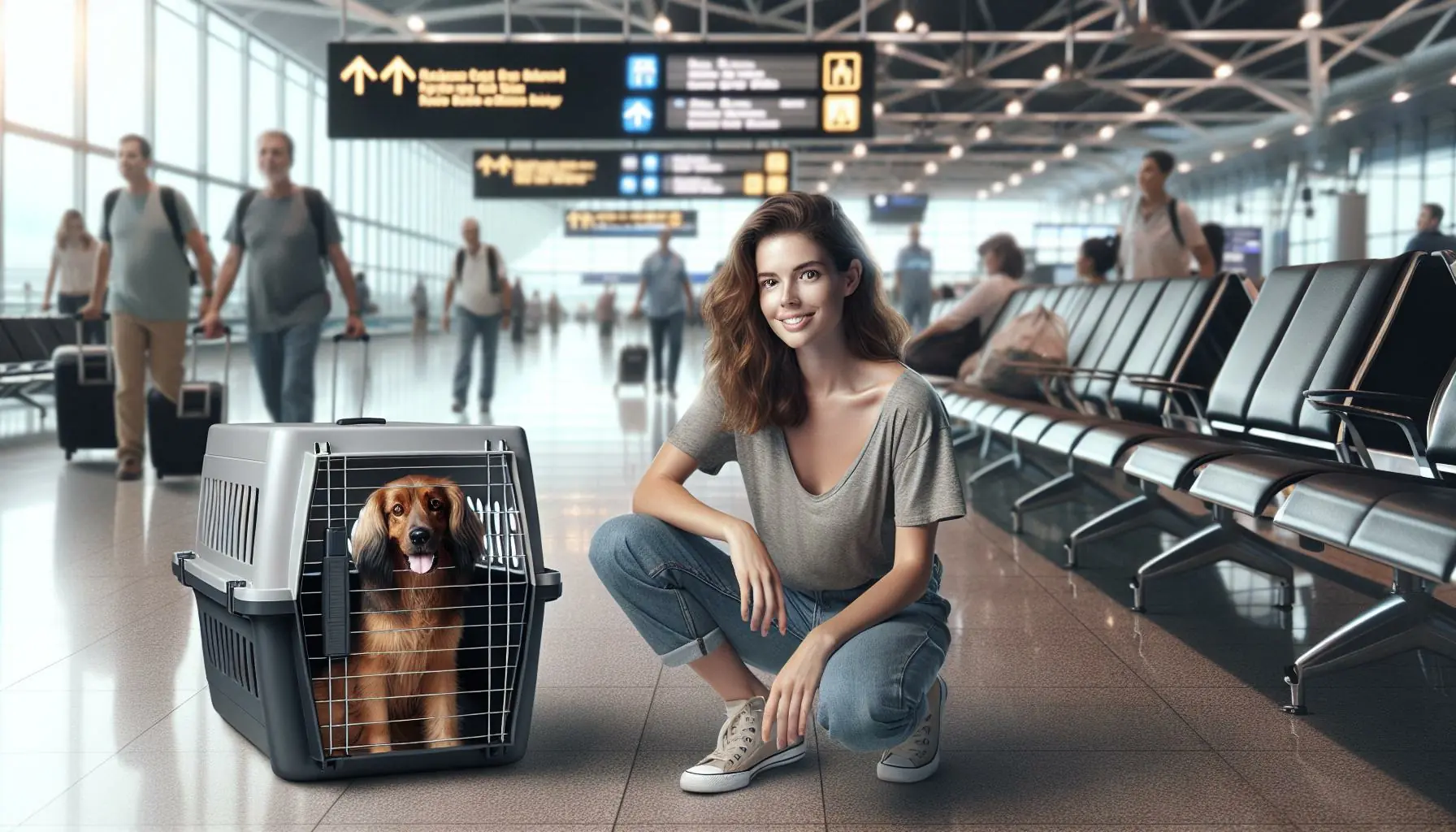Table of Contents
ToggleTraveling with a furry friend can feel like planning a mission to Mars – especially when it comes to choosing the right dog crate for air travel. Whether it’s a cross-country adventure or an international journey, keeping pets safe and comfortable during flights is every pet parent’s top priority.
Airlines have strict requirements for pet carriers and it’s crucial to get it right. The perfect travel crate isn’t just about meeting regulations – it’s about giving your four-legged companion a first-class experience at 35,000 feet. From size specifications to ventilation requirements these portable pet homes need to tick all the boxes for both safety and comfort.
Understanding Airline Requirements for Dog Crates
Airlines enforce specific requirements for dog crates to ensure pet safety during flights. These regulations cover material construction, ventilation standards, size specifications, and security features.
IATA Regulations and Standards
The International Air Transport Association (IATA) sets global standards for pet travel containers. IATA-compliant crates feature rigid plastic shells, metal doors with secure latches, and ventilation holes on three sides. The crates include food and water dishes attached to the door with external access for airline staff. Metal hardware connects all parts of the container, replacing plastic fasteners. Live animal labels, upright arrows, and food/water instructions attach prominently to the crate’s exterior. Each container provides a solid, leak-proof bottom with absorbent material.
| Dog Size | Crate Length | Crate Width | Crate Height |
|---|---|---|---|
| Small | 21 inches | 16 inches | 15 inches |
| Medium | 28 inches | 20 inches | 21 inches |
| Large | 36 inches | 25 inches | 27 inches |
| X-Large | 40 inches | 27 inches | 30 inches |
Essential Features of Airline-Approved Dog Crates

Airline-approved dog crates incorporate specific design elements that ensure pet safety during air transport. These features meet strict IATA requirements while providing comfort for pets throughout their journey.
Ventilation and Air Flow Design
Airline-approved crates feature strategically placed ventilation openings on three sides of the container. The mesh openings occupy 16% of the total wall space through a pattern of holes or slots at least 1 inch in diameter. Metal grates line each vent area to prevent escape while maintaining proper airflow at high altitudes. Cross-ventilation ensures continuous fresh air circulation throughout the flight.
Security and Locking Mechanisms
Metal spring-loaded locking pins secure the crate’s door panels from accidental opening during transit. Each corner connects with metal hardware bolts instead of plastic clips for enhanced durability. Double-door latches engage automatically when closed, requiring deliberate manipulation to open. The crate’s base attaches to the top section using metal screws placed every 2 inches along the rim.
Water and Food Attachments
External water cups mount securely to the crate door with metal brackets for easy access by airline staff. Built-in food containers attach to the interior side panels 6 inches above the floor to prevent spilling. The attachments include anti-spill rims extending 0.5 inches above the container edge. Quick-release mechanisms allow for swift container removal during cleaning while maintaining secure placement during transport.
Preparing Your Dog Crate for Air Travel

Proper preparation of a dog crate involves several essential steps to ensure compliance with airline regulations and pet comfort during the flight. The process includes attaching required documentation and incorporating comfort features that enhance the travel experience.
Required Labels and Documentation
Airlines mandate specific labeling requirements for pet travel crates. “Live Animal” stickers must appear on the top and sides of the crate in letters at least 1 inch tall. Identification labels display crucial information: pet name, owner contact details, destination address and emergency contact numbers. Additional required documents include:
- Health certificate from a licensed veterinarian (issued within 10 days of travel)
- Proof of vaccination records
- Feeding instructions attached to the crate exterior
- “This Side Up” arrows on all sides
- Confirmation of food and water provisions
Adding Comfort Items and Absorbent Materials
The interior setup focuses on creating a secure environment for the dog during flight. A waterproof pad lines the bottom of the crate to absorb accidents. Approved comfort items include:
- Non-slip mat secured to the crate floor
- Familiar blanket with the pet’s scent
- Absorbent puppy pads (2-3 layers)
- Small comfort toy attached to the interior
- Water-absorbing mat beneath food and water dishes
Airlines prohibit loose bedding materials during flight to prevent shifting or blockage of ventilation holes. Each comfort item requires secure attachment to prevent movement during transport.
Top Airline-Approved Dog Crate Models
Leading manufacturers offer specialized travel crates that meet airline regulations while prioritizing pet comfort and safety during flights. These models incorporate IATA-compliant features with innovative design elements for secure air transport.
Hard-Sided Crate Options
Petmate Sky Kennel leads the market with its durable plastic shell construction and 360-degree ventilation system. The Petmate Ultra Vari Kennel features a reinforced steel door with multiple latches, providing enhanced security for medium to large breeds. AmazonBasics Pet Kennel includes metal screws instead of plastic clips, meeting strict airline requirements for international travel. These models come equipped with pre-drilled holes for zip-tie attachments, food bowls with external access points and “Live Animal” stickers.
Premium Travel Kennel Solutions
IATA-approved Gunner G1 Kennels incorporate aircraft-grade aluminum frames with rotomolded construction for maximum durability. SportPet Designs offers oversized windows for increased airflow while maintaining structural integrity through double-wall construction. The Ruff Land Performance Kennel features elevated floors with built-in drainage systems, preventing moisture accumulation during long flights. Each premium model includes specialized tie-down straps, backup security pins and impact-resistant materials tested under extreme conditions.
Tips for Crate Training Before Air Travel
Successful air travel with dogs relies heavily on proper crate training before the flight. Early preparation helps dogs associate their travel crate with a safe comfortable space.
Getting Your Dog Comfortable
Introducing dogs to their travel crate starts with positive association techniques 4-6 weeks before the flight. Place treats inside the crate to encourage exploration allowing dogs to enter freely at their own pace. Add comfortable bedding that meets airline requirements such as a non-slip mat or thin blanket secured to prevent movement. Practice closing the door for gradually increasing periods starting with 5 minutes then extending to 30-minute sessions. Feed meals near or inside the crate to create positive experiences with the space.
Pre-Flight Exercise Recommendations
Exercise routines optimize a dog’s comfort during the flight experience. Schedule a 30-minute walk 2 hours before departure to help expend energy. Incorporate mental stimulation exercises like treat puzzles or basic obedience training 1 hour before crate time. Limit water intake to small amounts 2 hours before flight while ensuring proper hydration throughout the day. Take dogs for a final bathroom break 30 minutes before entering the crate. Playing calming games like “find it” or gentle fetch helps reduce anxiety without causing overexertion.
Choosing the right dog crate for air travel requires careful consideration of airline regulations safety features and your pet’s comfort needs. A properly selected IATA-compliant crate paired with thorough preparation can make air travel less stressful for both dogs and their owners.
Remember that investing in a high-quality airline-approved crate isn’t just about meeting regulations – it’s about ensuring your furry friend’s safety and comfort throughout the journey. With proper crate training and the right equipment traveling with pets by air can be a smooth and secure experience.
Taking time to select and prepare the appropriate crate will give pet owners peace of mind knowing their dogs are traveling safely and comfortably to their destination.




